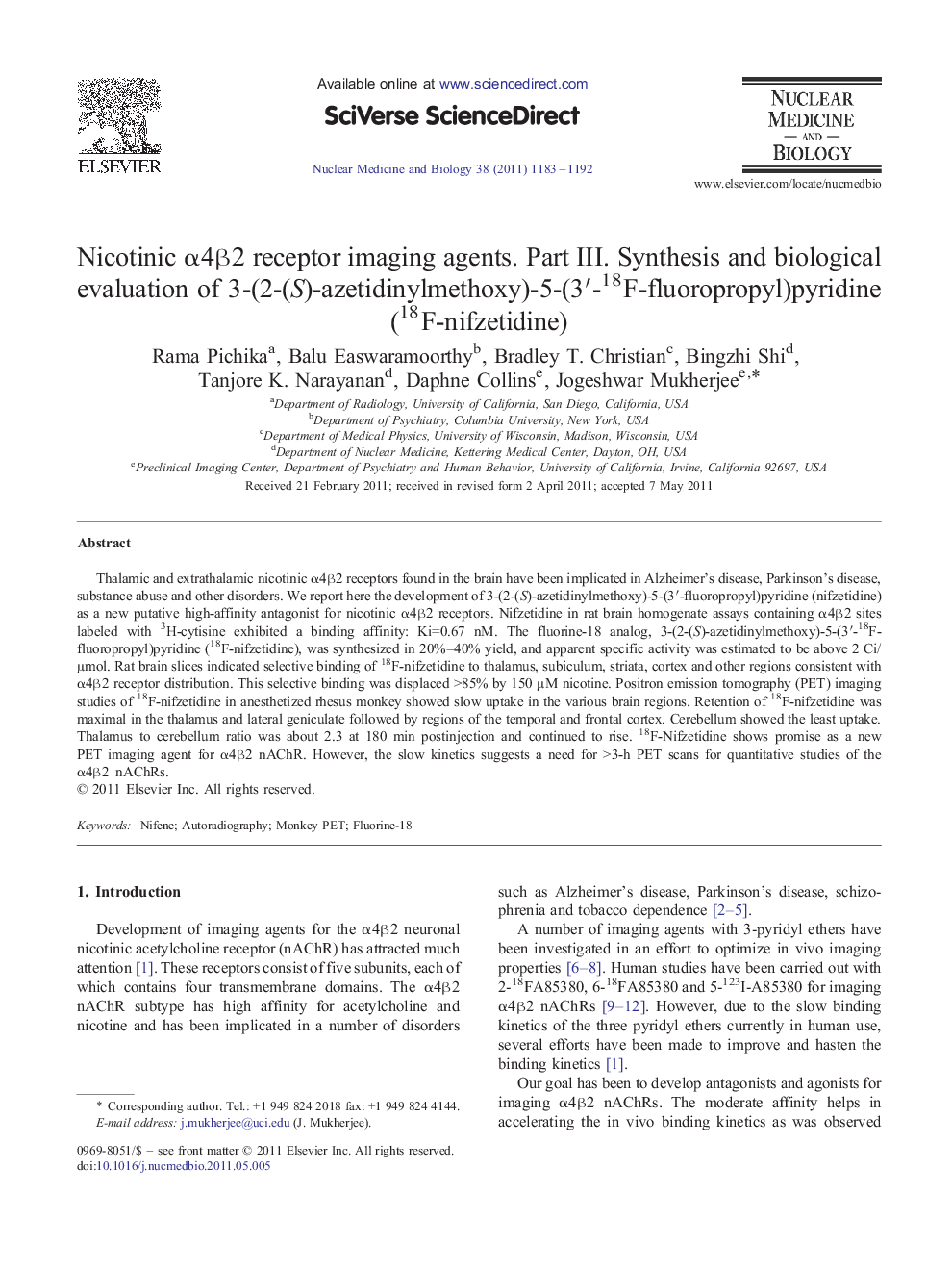| Article ID | Journal | Published Year | Pages | File Type |
|---|---|---|---|---|
| 2153854 | Nuclear Medicine and Biology | 2011 | 10 Pages |
Abstract
Thalamic and extrathalamic nicotinic α4β2 receptors found in the brain have been implicated in Alzheimer's disease, Parkinson's disease, substance abuse and other disorders. We report here the development of 3-(2-(S)-azetidinylmethoxy)-5-(3â²-fluoropropyl)pyridine (nifzetidine) as a new putative high-affinity antagonist for nicotinic α4β2 receptors. Nifzetidine in rat brain homogenate assays containing α4β2 sites labeled with 3H-cytisine exhibited a binding affinity: Ki=0.67 nM. The fluorine-18 analog, 3-(2-(S)-azetidinylmethoxy)-5-(3â²-18F-fluoropropyl)pyridine (18F-nifzetidine), was synthesized in 20%-40% yield, and apparent specific activity was estimated to be above 2 Ci/μmol. Rat brain slices indicated selective binding of 18F-nifzetidine to thalamus, subiculum, striata, cortex and other regions consistent with α4β2 receptor distribution. This selective binding was displaced >85% by 150 μM nicotine. Positron emission tomography (PET) imaging studies of 18F-nifzetidine in anesthetized rhesus monkey showed slow uptake in the various brain regions. Retention of 18F-nifzetidine was maximal in the thalamus and lateral geniculate followed by regions of the temporal and frontal cortex. Cerebellum showed the least uptake. Thalamus to cerebellum ratio was about 2.3 at 180 min postinjection and continued to rise. 18F-Nifzetidine shows promise as a new PET imaging agent for α4β2 nAChR. However, the slow kinetics suggests a need for >3-h PET scans for quantitative studies of the α4β2 nAChRs.
Keywords
Related Topics
Life Sciences
Biochemistry, Genetics and Molecular Biology
Cancer Research
Authors
Rama Pichika, Balu Easwaramoorthy, Bradley T. Christian, Bingzhi Shi, Tanjore K. Narayanan, Daphne Collins, Jogeshwar Mukherjee,
